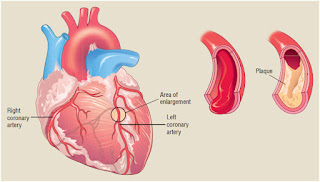 |
| Hemhemorrhagic stroke. |
Learn about hemorrhagic stroke, its causes, symptoms, and available treatment options. Discover valuable insights on prevention and post-stroke care.
Introduction:
Hemorrhagic stroke is a serious medical condition characterized by bleeding in the brain, leading to damage and potential long-term consequences. Understanding the causes, symptoms, and treatment options is crucial for early intervention and improving outcomes. This article provides comprehensive information on hemorrhagic stroke, emphasizing prevention and post-stroke care.
1.Hemorrhagic Stroke Causes:
- Delve into the causes of hemorrhagic stroke, including ruptured blood vessels in the brain, aneurysms, and arteriovenous malformations (AVMs).
- Explain how high blood pressure, head injuries, and certain medications can increase the risk of experiencing a hemorrhagic stroke.
- Emphasize the importance of identifying and managing underlying conditions to prevent future occurrences.
 |
| Hemorrhagic stroke |
- Enumerate common symptoms of hemorrhagic stroke, such as sudden severe headaches, weakness or numbness on one side of the body, difficulty speaking, vision disturbances, and loss of coordination.
- Highlight the significance of seeking immediate medical attention when these symptoms manifest.
3: Hemorrhagic Stroke Diagnosis and Treatment:
- Discuss various diagnostic procedures, including computed tomography (CT) scans, magnetic resonance imaging (MRI), and cerebral angiography, which aid in confirming a hemorrhagic stroke diagnosis.
- Explain the vital role of emergency medical treatment, blood pressure control, and surgery in managing this condition.
- Mention innovative treatment options such as endovascular coiling, stenting, and minimally invasive surgery.
4: Prevention and Risk Reduction:
- Emphasize the significance of maintaining a healthy lifestyle to reduce the risk of hemorrhagic stroke, including regular exercise, a balanced diet, and managing hypertension.
- Highlight the importance of drug management and seeking medical advice to adjust medications that may increase the risk.
- Promote awareness regarding the dangers of smoking and excessive alcohol consumption as risk factors for hemorrhagic stroke.
Post-Stroke Care and Rehabilitation:
- Discuss the importance of follow-up care, rehabilitation programs, and the multidisciplinary approach to regain function after a hemorrhagic stroke.
- Explore the role of physical therapy, occupational therapy, speech therapy, and psychological support in the recovery process.
- Provide insights on assistive devices and resources available to support individuals post-stroke.
Conclusion:
By familiarizing oneself with the causes, symptoms, and treatment of hemorrhagic stroke, individuals can take proactive measures to prevent this life-threatening condition. Early recognition and immediate medical intervention play a crucial role in maximizing recovery and reducing long-term complications. Stay informed, adopt a healthy lifestyle, and prioritize preventive care to reduce the risk of hemorrhagic stroke and improve overall well-being.





.jpeg)





.jpeg)




